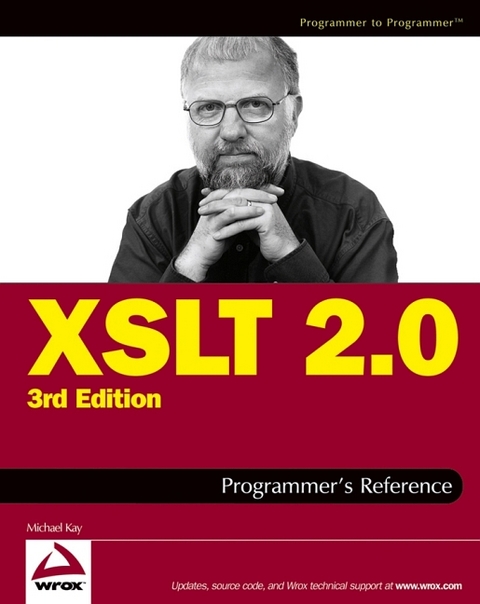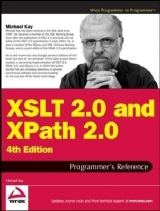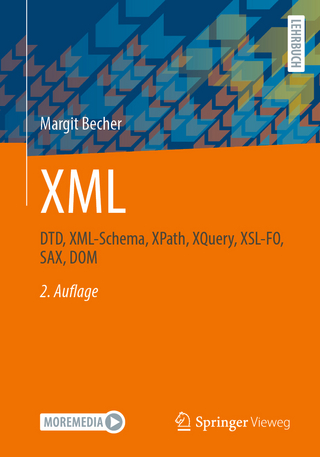
XSLT 2.0 Programmer's Reference
Hungry Minds Inc,U.S. (Verlag)
978-0-7645-6909-8 (ISBN)
- Titel ist leider vergriffen;
keine Neuauflage - Artikel merken
What is this book about? XSLT 2.0 Programmer's Reference, 3rd Edition, is the authoritative reference guide to the language. Without using the formal and inaccessible language of the W3C specifications, it tells you exactly what every construct in the language does, and how it is intended to be used. This book is a reference rather than a tutorial; it is designed for the professional programmer who is using the language every day. It is the book that people quote when they claim that a particular product is giving the wrong answer, and the book that implementers of the language turn to when they want clarification of the specifications. At the same time, the book is readable. Reviews of the previous editions of the XSLT Programmer's Reference, which this book grew from, show that readers appreciate the background material on the design thinking behind the language, the essay on functional programming, the occasional dry wit, the gentle criticism of the language specification when appropriate, and the fact that the examples stray into a diverse range of interesting application areas.
Michael Kay has been working in the XML field since 1997; he became a member of the XSLWorking Group soon after the publication of XSLT 1.0, and took over as editor of the XSLT 2.0 specification in early 2001. He is also a member of the XQueryWorking Group. He is well known not only through previous editions of this book, but also as the developer of the open--source Saxon product, a pioneering implementation of XSLT 2.0, XPath 2.0, and XQuery 1.0. The author has recently formed his own company, Saxonica Limited, to provide commercial software and services building on the success of the Saxon technology. Previously he spent three years with Software AG, working with the developers of the Tamino XML server, a leading XQuery implementation. His background is in database technology: after leaving the University of Cambridge with a Ph.D., he worked for many years with the (then) computer manufacturer ICL, developing network, relational, and object--oriented database software products as well as a text search engine, and held the position of ICL Fellow.
Acknowledgments. Introduction. List of Examples. Chapter 1: XSLT in Context. Chapter 2: The XSLT Processing Model. Chapter 3: Stylesheet Structure. Chapter 4: Stylesheets and Schemas. Chapter 5: XSLT Elements. Chapter 6: Patterns. Chapter 7: XSLT Functions. Chapter 8: Extensibility. Chapter 9: Stylesheet Design Patterns. Chapter 10: Case Study: XMLSpec. Chapter 11: Case Study: A Family Tree. Chapter 12: Case Study: Knight's Tour. Appendix A: XPath 2.0 Syntax Summary. Appendix B: XPath Function Library. Appendix C: Microsoft XSLT Processors. Appendix D: JAXP: The Java API for Transformation. Appendix E: Saxon. Appendix F: Backwards Compatibility. Glossary. Index.
| Erscheint lt. Verlag | 24.8.2004 |
|---|---|
| Reihe/Serie | Wrox Programmer to Programmer |
| Zusatzinfo | 65 b&w illus |
| Verlagsort | Foster City |
| Sprache | englisch |
| Maße | 187 x 236 mm |
| Gewicht | 1344 g |
| Einbandart | Paperback |
| Themenwelt | Informatik ► Programmiersprachen / -werkzeuge ► XML |
| ISBN-10 | 0-7645-6909-0 / 0764569090 |
| ISBN-13 | 978-0-7645-6909-8 / 9780764569098 |
| Zustand | Neuware |
| Informationen gemäß Produktsicherheitsverordnung (GPSR) | |
| Haben Sie eine Frage zum Produkt? |


